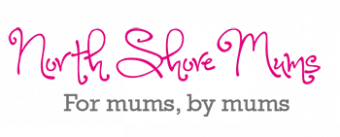Young children love listening to a good story, but there comes a time when they need to learn to read and write words themselves. So here are some very helpful tips from Early Learning World, to aid your toddler and preschooler in their reading and writing journey…
Tips for toddlers
There’s a lot of truth in the saying, “It’s never too early to begin reading to your child.” Reading with your little one from an early age lays the foundation for strong literacy skills. Even as early as six months, babies can begin to enjoy simple board or cloth books, delighting in the vibrant pictures and textures. You can gradually introduce more complex materials to match their developing abilities as they grow.
Age-Appropriate Books for Growing Minds
- From 6 Months to 1 Year: Start with tactile books that feature bright images and textures. At this stage, your baby will be fascinated by turning pages and touching different surfaces.
- From 1 to 2 Years: Transition to books with rhymes and repetition. These types of books help toddlers recognize patterns in language and start to anticipate what comes next in the story.
- 2 Years and Beyond: As your child matures, read books with more text and simple storylines. These books help expand their vocabulary and comprehension skills.
Tips for preschoolers
The Importance of Interactive Reading for Preschoolers
Reading to children is a well-known practice for fostering early literacy, but we must evolve our approach as toddlers become preschoolers. Interactive reading techniques are key to developing the literacy skills needed for big school. Unlike passive listening, interactive reading encourages children to think critically about the text and engage in meaningful discussions.
Techniques for Interactive Reading
- Predicting the Story: Start by looking at the book’s cover together. Ask your child to predict the story and discuss what they already know about the objects or characters on the cover. This helps them make connections within the story.
- Encouraging Predictions During Reading: Throughout the story, prompt your child to predict what might happen next. Ask thought-provoking questions such as, “I wonder why the (character) did that?” to encourage deeper thinking and comprehension.
- Summarizing and Reflecting: After finishing the book, help your child summarize the key events. Ask them to share their thoughts on the story, discussing what they liked or didn’t like. This reflection encourages critical thinking and reinforces comprehension.
Phonics: A Key Component of Early Literacy
Phonics instruction plays a crucial role in early literacy development. Preschoolers are at the perfect age to begin learning basic phonics, which involves connecting letters to their corresponding sounds. This foundational skill is necessary for later reading success, especially with interactive reading techniques.
The Role of Phonics in Learning to Read
Phonics instruction involves teaching children the names and sounds of letters before progressing to blending these sounds to form full words. Australia’s National Inquiry into Teaching Reading (2005) emphasized the importance of systematic and direct phonics instruction for young children. Similarly, research from the US National Reading Panel and the UK Independent Review of Early Reading has supported this approach.
Phonics Instruction in Schools
While some parents may wait until Kindergarten to begin phonics instruction, many children do not receive this foundational education. Many teachers may not be trained in phonics and instead focus on whole-language approaches, where children guess words based on the first letter and pictures. Although phonics is gaining more attention in schools, its implementation often depends on the individual teacher.
Preparing Your Preschooler for School
Even if your preschooler can recite the alphabet song, understanding each letter’s specific sounds requires consistent and explicit instruction. Some daycare centers and preschools may include phonics as part of their curriculum, but many do not. If your child is starting school soon, reviewing their letter-sound associations is a great idea to give them a head start in reading.
Combining interactive reading techniques with early phonics instruction can help set the foundation for your child’s literacy journey and ensure they’re well-prepared for the exciting learning ahead.












